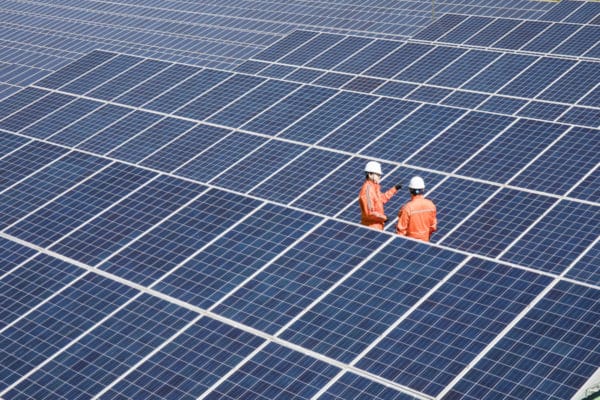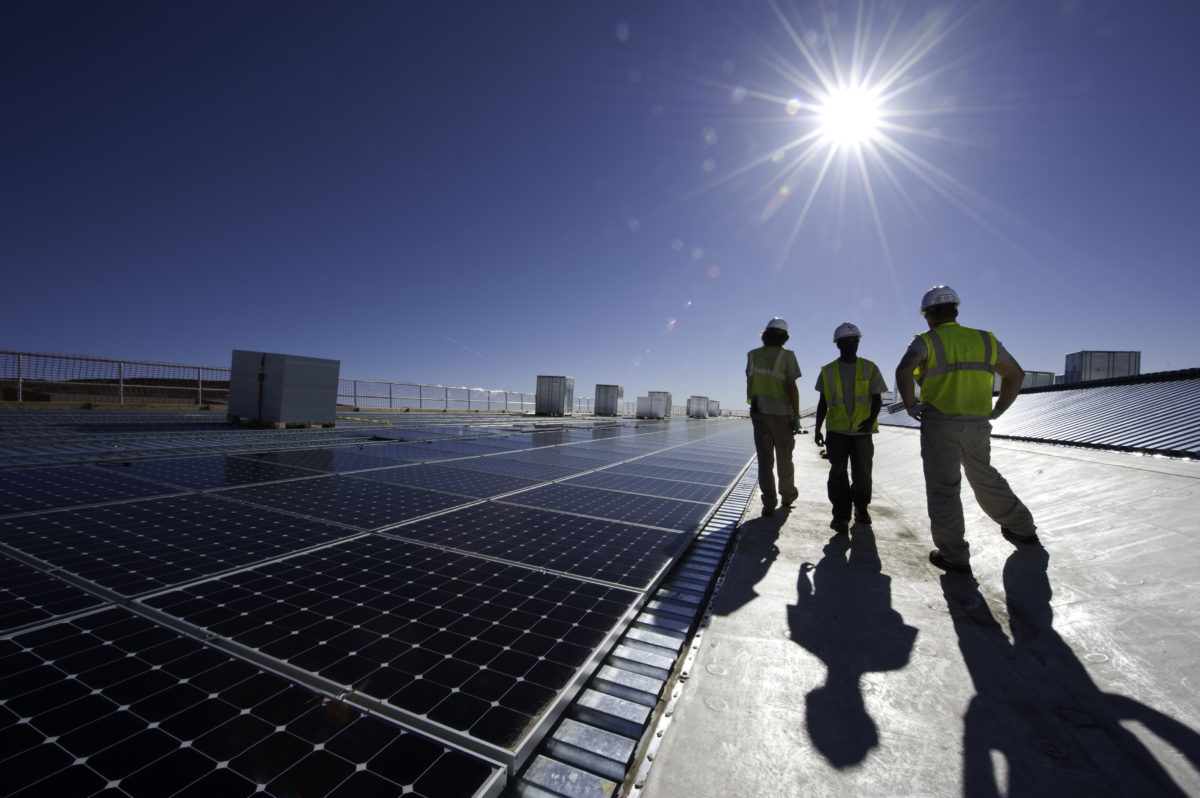The U.S. solar industry employed 231,474 workers in 2020, a 6.7% drop from 2019 due to pandemic restrictions and increased labor productivity, according to the National Solar Jobs Census 2020. The annual report was released by the Solar Energy Industries Association (SEIA), The Solar Foundation, the Interstate Renewable Energy Council (IREC), and BW Research.
The report said the drop in jobs was largely split evenly among states. Labor productivity rose in all three market segments, up 19% in the residential sector, 2% in the non-residential sector, and 32% in the utility-scale sector. Less labor-intensive utility-scale installations contributed to a record amount of solar capacity added in 2020, the report said.
However, the pandemic took a toll on residential jobs in the summer, and those jobs did not fully recover by the end of the year.
Labor productivity improvements were a result of growth in average system size, less labor-intensive customer acquisition, and increased competition for skilled labor, the report said. In 2020, the average worker installed more than 200 kW of solar, double the amount in 2017, and more than three times the amount recorded in 2011.
The Solar Foundation has published the National Solar Jobs Census annually since 2010.
Sector detail
Installation and construction-related employment continued to be the largest segment in the industry, representing 67% of all jobs. Of those jobs, 55% were residential, 18% were commercial, 8% community solar, and 19% were utility-scale.

Image: 174 Power Global
Workers in solar manufacturing jobs represented 14% of the sector’s employment. Sales and distribution and operations and maintenance represented 11% and 4% of all jobs, respectively. Workers in fields like finance, legal, research, advocacy and communications, made up 4% of all U.S. solar workers in 2020.
The solar industry’s five-year streak of job growth ended in 2016 when employment hit more than 260,000. Since then, numbers have trended sideways and even downward, reaching the pre-pandemic level of 248,000 in 2019.
SEIA said that the solar industry is on a course to end its employment plateau and reach 400,000 solar jobs by 2030. Even so, employment will need to top 900,000 workers by 2035 to meet the Biden administration’s clean energy goals. SEIA said it is advocating for policies that will grow clean energy deployment and lay the groundwork to hire and train those workers.
The U.S. solar industry has a unionization rate of 10.3%, which SEIA said is higher than previously estimated and comparable to the economy-wide rate.
Increased diversity
The report also showed an increase in solar workforce diversity across nearly every demographic category, including workers identifying as “female,” which now represent 30% of the solar workforce. Representation among women and minority demographic groups has improved since 2015, including a 39% increase for women, 92% increase for Hispanic or Latino workers, 18% increase for Asian American and Pacific Islander workers, and a 73% increase for Black or African American workers.

Image: David Wagman
The solar industry also continues to outpace the rest of the economy in its employment of veterans, which represent 8.7% of the solar workforce, compared to 5.7% in the overall economy.
The report said that lockdowns that began in March 2020 in major solar markets from California to the Mid-Atlantic put a halt to most residential and commercial installations – the largest source of solar jobs – leading to tens of thousands of layoffs and furloughs.
It said that the overall increase in people working from home, using more electricity, and spending less money elsewhere increased interest in solar. This helped solar companies rehire many of their laid-off and furloughed staff.
Utility-scale solar construction was generally allowed to continue work that had already begun, in part due to federal and state guidance that deemed large-scale solar construction to be essential work. This sector never saw the steep employment drops experienced by residential and commercial solar installers, the report said. However, many large solar contractors experienced labor shortages throughout the remainder of 2020.
This content is protected by copyright and may not be reused. If you want to cooperate with us and would like to reuse some of our content, please contact: editors@pv-magazine.com.









By submitting this form you agree to pv magazine using your data for the purposes of publishing your comment.
Your personal data will only be disclosed or otherwise transmitted to third parties for the purposes of spam filtering or if this is necessary for technical maintenance of the website. Any other transfer to third parties will not take place unless this is justified on the basis of applicable data protection regulations or if pv magazine is legally obliged to do so.
You may revoke this consent at any time with effect for the future, in which case your personal data will be deleted immediately. Otherwise, your data will be deleted if pv magazine has processed your request or the purpose of data storage is fulfilled.
Further information on data privacy can be found in our Data Protection Policy.